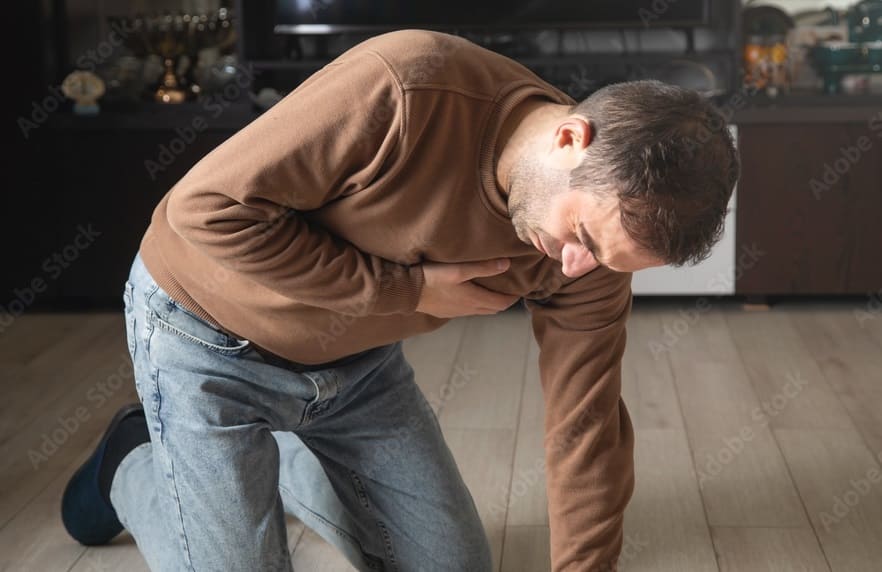There’s something magical about dancing — it’s a way of expressing happiness, letting loose, and celebrating life. But when headlines pop up saying “Man dies while dancing at wedding” or “Heart attack during Garba celebration”, it shakes us. It’s alarming. How can something so joyful and seemingly harmless end in tragedy?
Let’s break this down with insights from cardiologists to understand why this is happening and how you can protect yourself and your loved ones — especially during festivals, weddings, and high-energy events.
Doctors Reveal Why Dancing Can Lead to Sudden Heart Attacks
1. Dancing Isn’t Dangerous — But an Unprepared Heart Might Be
Dancing, in medical terms, is a form of aerobic exercise. But unlike a planned workout at the gym, dancing during celebrations often comes with no warm-up, no pacing, and no awareness of physical limits.
A Doctor’s Insight:
Dr. Sameer Gupta, Interventional Cardiologist, says:
“People who lead mostly sedentary lives suddenly start dancing for 30-40 minutes non-stop. Their heart is not used to that level of exertion. This sudden spike in physical activity can trigger a heart attack, especially if there’s an underlying heart issue.”
Imagine revving a car engine that hasn’t been serviced in years — that’s what many hearts go through at parties.
2. Silent Killers: Undiagnosed Heart Problems
A lot of people walk around with blocked arteries, high blood pressure, or early-stage heart disease — without knowing it. These conditions often don’t cause symptoms until it’s too late.
During dancing:
- The heart rate increases.
- The demand for oxygen shoots up.
- Blood pressure rises.
- Emotional excitement adds stress.
If the coronary arteries (that supply blood to the heart) are already narrowed, this sudden demand can’t be met, leading to cardiac arrest or heart attack.
Dr. Ramesh Kapoor, Cardiologist, explains:
“We’ve seen people with 90% artery blockage who never felt chest pain until the heart attack hit. They felt completely healthy — until they weren’t.”
3. Emotional High + Physical Exertion = Risk Combo
Let’s face it — weddings, festivals, and parties come with a full package: loud music, cheers, laughter, emotional reunions, high-energy dancing, and even tears of joy. While it sounds like a dream, your heart may see it as a storm.
This phenomenon is sometimes referred to as:
“Happy Heart Syndrome” or “Stress Cardiomyopathy”
Even a strong emotion — like immense joy or excitement — can mimic a heart attack in people with sensitive cardiovascular systems. When this emotional high is combined with physical stress, the result can be catastrophic.
4. Alcohol, Late Nights, and Fatigue: The Perfect Storm
Alcohol is a common companion at celebrations, but:
- It can dehydrate the body.
- It increases heart rate and blood pressure.
- It can trigger arrhythmias (irregular heart rhythms).
- And when mixed with lack of sleep and overeating, the body goes under extra strain.
Dr. Pooja Mehta, Cardiologist, notes:
“We’ve seen a pattern during wedding seasons — people drink, dance, skip sleep, and eat heavy food. The body is pushed to the edge. Add undiagnosed heart disease, and it’s a recipe for disaster.”
5. Age, Lifestyle, and Ignoring Early Symptoms
Here’s the hard truth: many people don’t take heart health seriously until they experience a scare.
- Middle-aged men (40–60) with belly fat, stress, and poor fitness levels are the most vulnerable.
- People ignore signs like mild breathlessness, tightness in the chest, or fatigue, thinking it’s just “age” or “weight.”
But when they suddenly dance like they did in their 20s — their heart might not keep up.
“People often overestimate their stamina and underestimate the strain dancing can cause,” says Dr. Gupta.
Warning Signs to Watch While Dancing
Here are symptoms that should never be ignored, especially during or after dancing:
- Sudden breathlessness
- Chest discomfort or tightness
- Dizziness or lightheadedness
- Sweating profusely (without heat)
- Palpitations or irregular heartbeat
- Pain in the jaw, neck, shoulder, or back
If anyone experiences these, stop immediately, sit down, and seek medical help.
How Can You Stay Safe?
Dancing should be a celebration — not a health hazard. Here’s how to enjoy safely, according to doctors:
1. Get a Health Check-Up
Especially after 35–40, go for:
- ECG
- Lipid profile
- Blood pressure check
- Treadmill test (if overweight or diabetic)
- Echo or angiography (if family history is strong)
2. Stay Physically Active Year-Round
Don’t let dancing be your only workout. Even 30 mins of brisk walking daily can build cardiac endurance.
3. Avoid Sudden Bursts
Start slow, take breaks, and don’t force yourself to keep up with younger folks.
4. Stay Hydrated & Light
Drink water, avoid heavy meals or alcohol just before dancing.
5. Mind Your Medications
If you’re diabetic, hypertensive, or have a stent — make sure your meds are on track before any physical activity.
Final Thoughts: Dance with Heart, But Not Without Awareness
The heart is a resilient, hardworking organ — but it also needs care, rest, and respect.
Dancing is not the enemy. Lack of awareness is.
So next time you’re about to hit the dance floor — especially at a wedding or during Navratri — check in with your body. Don’t ignore the signs. And remember: your heart should feel the beat — not break because of it.
Also Read:
